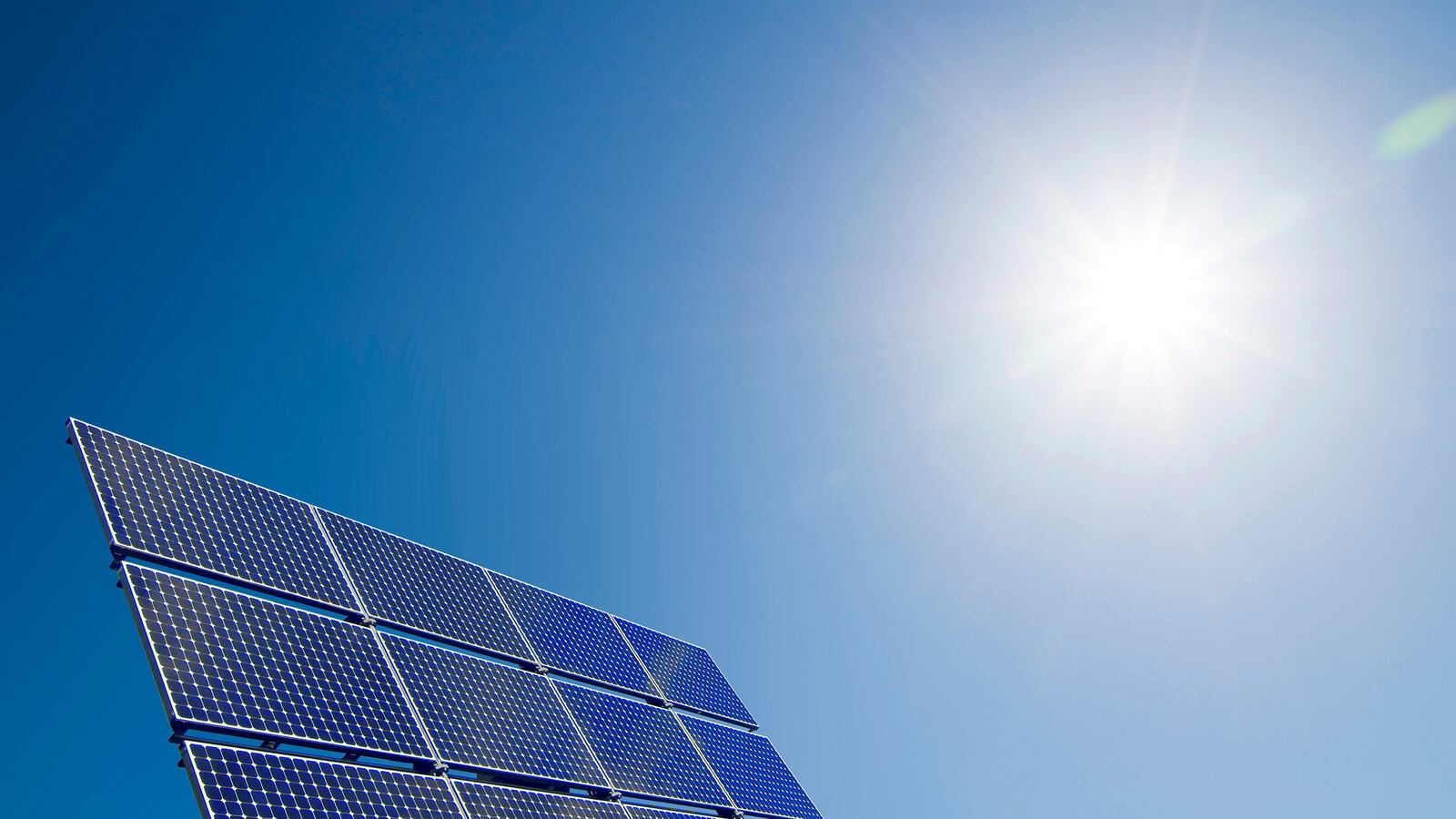Electric cars are slowly gaining strength. Manufacturers are busily introducing new models of all-electric and hybrid cars. And each month, about 10,000 new vehicles powered entirely or in part by electricity hit the roads. Even so, these sales account for less than one percent of the monthly sales total. Which means the idea of powering large numbers of cars using renewable sources of electricity, like wind and solar power, instead of gasoline, remains a distant goal.
But renewable electricity is playing an increasingly important role in car production.
If you’ve never visited a car factory, it’s difficult to appreciate the size and scale of these modern monuments to industry. Auto factories tend to sprawl horizontally over huge lots, and have flat roofs. They’re long-lived assets, which means their owners intend to keep them operating for a long time. They are often set in quasi-rural areas, with vast parking lots and vacant land surrounding them. And they use a fair amount of power for all that welding, to move the assembly line, to keep the lights on, and to cool and heat various departments and assembly stations. All of which makes them excellent candidates for solar power—even if they are generally not located in the most sunny states.
Which explains why there’s something of a solar boom taking place at American car factories.
General Motors assembles the popular Chevrolet Cruze at its big plant in Lordstown, Ohio, which is about 60 miles southeast of Cleveland—about as far from the sunbelt as you can get. In addition to the shift workers inside the plant, teams are now working on the roof, installing an 8,500-panel 2.2 megawatt solar plant. When completed, as Hybridcars.com noted, “It will be GM’s largest solar installation in the Western Hemiisphere.” While it provides only a small fraction of the power used—about 1.5 percent—it does represent an important investment and symbol. “With more solar installations than any other automotive company and the second-highest percentage of solar among all commercial users, GM shows that manufacturing and the use of renewable energy can go hand-in-hand.” said Rhone Resch, president and CEO of the Solar Energy Industries Association (SEIA).
Indeed, large companies are increasingly lighting up solar panels on their facilities. And car companies are helping to lead the way. Each year, SEIA identifies the top 25 companies adopting solar power in its annual Solar Means Business report. Big box retailers like Ikea and Walmart generally lead the rankings. But in the most recent report, three auto companies were among the top 25: Volkswagen was 15th with 10.0 megawatts installed, General Motors was 21st with 6.7 megawatts, and Toyota tied for 25th with 4.4 megawatts.
Volkswagen has been the most aggressive. On 33 acres adjacent to its factory in Chattanooga, Tennessee, it has planted more than 33,000 solar modules that have a combined capacity of 9.5 megawatts, which is enough to power several residential subdivisions—or enough to provide about 12.5 percent of the juice needed to run the factory that produces the Volkswagen Passat.
But General Motors isn’t far behind. It has already deployed solar elsewhere in Ohio, at the Toledo Transmission plant, at its power train plant in Baltimore, (where solar panels provide about nine percent of the electricity used), and at a factory in Orion, Michigan. Other automakers are getting into the act. At its Michigan Assembly Plant, Ford has a 500 kilowatt solar plant, along with a powerful array of batteries that can store power generated by the sun to be used after dark. Toyota, which has had solar panels on the roof of its sales office in California since 2002 also uses a small amount of solar power at a factory in Mississippi.
What accounts for this trend? Many consumer-facing companies use renewable energy primarily as a branding proposition—as a way to signal to customers that they are up on the latest trends and interested in moving toward a lower-carbon future. But auto companies have another goal in mind. One, the important developments in energy in recent years combined with incentives and falling costs have made renewable energy competitive with traditional power on a cost basis. And because they work in tough industries where every penny counts, car manufacturers are always looking for ways to squeeze a few more pennies out of the production process—whether that is reducing waste, managing inventory more effectively, or figuring out ways to a save a few dollars on electricity. Increasingly, adding solar power to the top of factories can help boost the bottom line.





